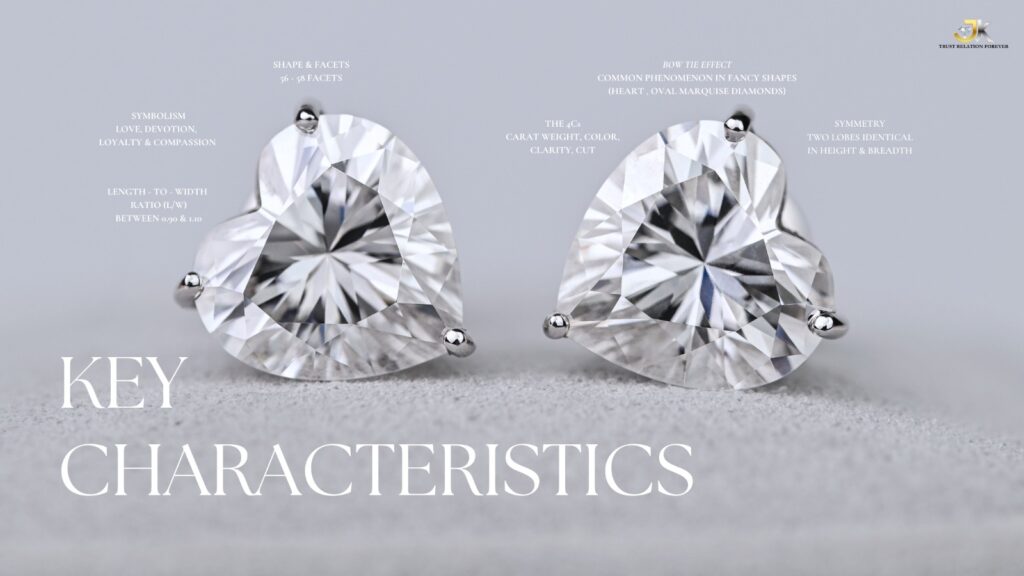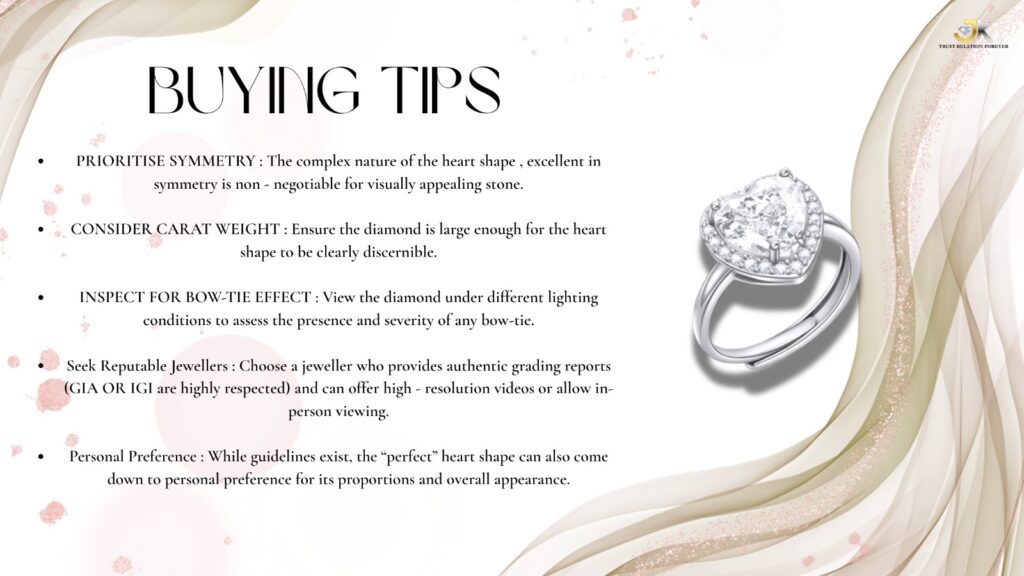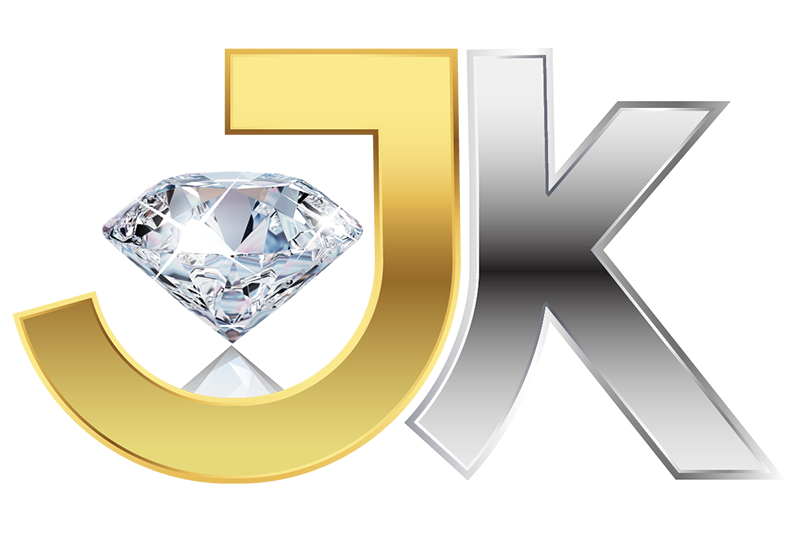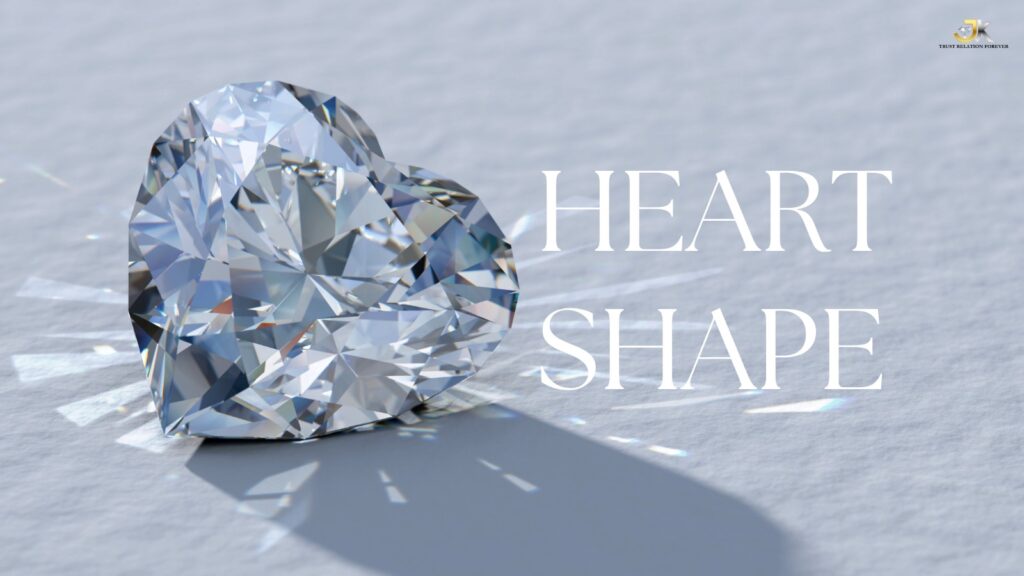A heart natural diamond is a unique and romantic diamond shape, highly symbolic of love, passion, and commitment. It’s a modified brilliant cut, meaning it’s designed to maximize sparkle and brilliance, similar to a round brilliant diamond, but in the distinctive form of a heart.
Key Characteristics and Evaluation:
* Shape and Faceting: A heart-cut diamond typically has 56 to 58 facets, including triangular and kite-shaped facets, which contribute to its fire and sparkle. Its unique shape is essentially a pear shape with a cleft at the rounded end, forming two distinct lobes and a pointed tip.
* Symbolism: The most prominent aspect of a heart diamond is its profound symbolism of love, devotion, loyalty, and compassion. This makes it a popular choice for engagement rings, anniversary gifts, and other expressions of deep affection. Historically, heart-shaped diamonds have been exchanged among royalty and nobility as tokens of love and diplomacy.

* The 4 Cs (and additional considerations): Like all natural diamonds, heart-shaped diamonds are evaluated based on the 4 Cs:
* Carat Weight: Crucial for heart-shaped diamonds. A minimum of 0.50 carats is often recommended to clearly distinguish the heart shape, as smaller stones can make the shape less apparent once set.
* Color: For heart-shaped diamonds, it’s often recommended to choose a color grade of G or higher, as color can be more concentrated at the tip and cleft in lower grades.
* Clarity: Look for an “eye-clean” diamond, meaning no inclusions or blemishes are visible to the naked eye.
* Cut: This is perhaps the most critical factor for a heart-shaped diamond. While heart shapes don’t always receive an official cut grade from all labs like round brilliants do, certain aspects are vital for a well-cut heart:
* Symmetry: Paramount for a heart shape. The two lobes should be identical in height and breadth, the cleft should be sharp and distinct, and the wings (sides leading to the point) should have a graceful, slightly rounded curve.

* Length-to-Width Ratio (L/W): An ideal L/W ratio for a classic heart shape is close to 1.00 (meaning it’s as long as it is wide). A range between 0.90 and 1.10 is generally considered good. Ratios outside this range can make the diamond appear too narrow or too wide.
* Table and Depth Percentage: Recommended ranges exist to optimize light performance. For example, a table percentage of 54-62% and a depth percentage of 56-66% are often suggested.
* Bowtie Effect: A common phenomenon in fancy shapes like heart, oval, and marquise diamonds, where a shadow resembling a bowtie can appear across the center of the stone. While a slight bowtie is normal, a prominent or severe one can detract from the diamond’s brilliance. It’s important to examine the diamond carefully for this.
Buying Tips:
* Prioritize Symmetry: Given the complex nature of the heart shape, excellent symmetry is non-negotiable for a visually appealing stone.
* Consider Carat Weight: Ensure the diamond is large enough for the heart shape to be clearly discernible.
* Inspect for Bowtie Effect: View the diamond under different lighting conditions to assess the presence and severity of any bowtie.
* Seek Reputable Jewelers: Choose a jeweler who provides authentic grading reports (GIA or IGI are highly respected) and can offer high-resolution videos or allow in-person viewing.
* Personal Preference: While guidelines exist, the “perfect” heart shape can also come down to personal preference for its proportions and overall appearance.
Heart natural diamonds are a beautiful and meaningful choice for those who want their jewelry to express deep affection and stand out with a unique, romantic flair.
Stay updated on the latest JK Sons postings by following us on Instagram.
https://www.instagram.com/j_ksons/
https://x.com/jksonsdiamond?t=a4_K1Uej1BwNCXt63jmEMw&s=08
https://www.youtube.com/@JKSons-q4x
https://www.facebook.com/share/19fYjZtEZf/
https://www.linkedin.com/in/jk-sons-a8005832b?utm_source=share&utm_campaign=share_via&utm_content=profile&utm_medium=android_app


